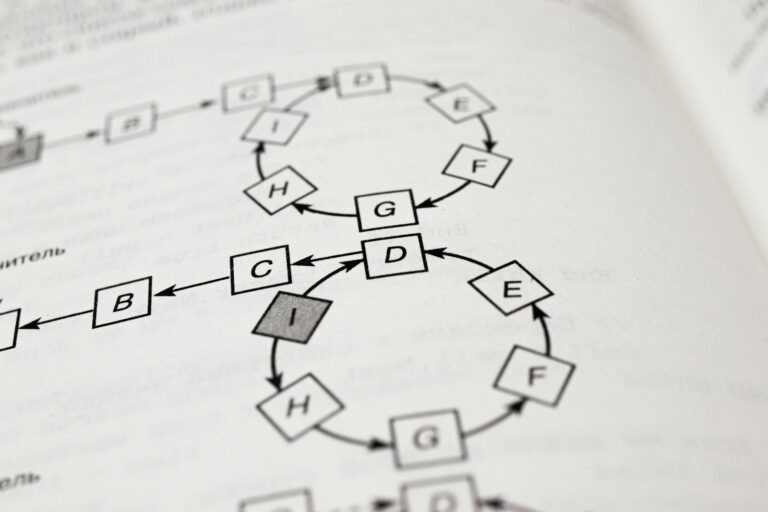Chapter: AVL Trees – Balanced Binary Search Trees
An AVL Tree is a self-balancing Binary Search Tree (BST) where the difference between heights of left and right subtrees (called the Balance Factor) is strictly maintained. The AVL Tree, named after its inventors Adelson-Velsky and Landis, is the first dynamically balanced binary search tree proposed in computer science. In the context of B.Tech Data Structures Notes 2025 and Unit 2 Notes Data Structures, AVL Trees are considered essential due to their guaranteed O(log n) time complexity for search, insertion, and deletion operations.
Introduction to AVL Trees
In a typical binary search tree, if elements are inserted in sorted order, it degrades into a linked list, increasing the time complexity of operations to O(n). To overcome this limitation, AVL Trees ensure that the tree remains balanced after every insertion or deletion, thereby preserving the logarithmic time complexities. This property is critical in developing high-performance applications and is a core topic in Engineering Study Material across all B.Tech and BCA programs.
Basic Terminologies in AVL Trees
A Binary Search Tree (BST) is a node-based data structure where each node has at most two children referred to as the left child and the right child. In a BST:
- The left subtree of a node contains only nodes with values less than the node’s value.
- The right subtree of a node contains only nodes with values greater than the node’s value.
An AVL Tree extends BST by adding a constraint: the Balance Factor (BF) of each node must be either -1, 0, or +1. The Balance Factor is calculated as:
BF = height(left subtree) – height(right subtree)
If after any insertion or deletion, the balance factor of any node becomes less than -1 or more than 1, then the tree must be rebalanced using one or more of the following rotations:
- Left Rotation (LL)
- Right Rotation (RR)
- Left-Right Rotation (LR)
- Right-Left Rotation (RL)
These rotations are the foundation of AVL tree balancing techniques.
Rotations in AVL Trees
Rotations are used to maintain the balance property of AVL trees after an insertion or deletion operation. Rotations rearrange the tree structure to maintain the balance factor within the acceptable range.
Right Rotation (Single Rotation RR)
This rotation is used when a node is inserted in the left subtree of the left child (LL case).
📌 Insert Diagram: Right Rotation (RR Case)
Left Rotation (Single Rotation LL)
This rotation is used when a node is inserted in the right subtree of the right child (RR case).
📌 Insert Diagram: Left Rotation (LL Case)
Left-Right Rotation (Double Rotation LR)
This is a combination of left rotation followed by a right rotation. Used when a node is inserted into the right subtree of the left child.
📌 Insert Diagram: Left-Right Rotation (LR Case)
Right-Left Rotation (Double Rotation RL)
This is a combination of right rotation followed by a left rotation. Used when a node is inserted into the left subtree of the right child.
📌 Insert Diagram: Right-Left Rotation (RL Case)
Insertion in AVL Trees
The insertion process in an AVL tree is the same as a normal BST insertion, but after each insertion, the tree must be checked for balance. If imbalance is found, the tree is rebalanced using appropriate rotations. The following steps summarize AVL insertion:
- Perform standard BST insertion.
- Traverse back from the inserted node to the root to check balance factor.
- Apply appropriate rotation to balance the tree.
📌 Insert Diagram: AVL Tree Insertion with Balancing
Deletion in AVL Trees
Deletion in an AVL Tree also follows the standard BST deletion rules. However, after deletion, the balance factor of nodes needs to be updated and appropriate rotations must be applied to restore balance.
- Perform standard BST deletion.
- Traverse up and update the balance factor.
- Apply necessary rotations if the balance factor condition is violated.
📌 Insert Diagram: AVL Tree Deletion and Rebalancing
Complexity Analysis of AVL Trees
The AVL Tree guarantees logarithmic time complexity due to its balancing rules:
- Search: O(log n)
- Insert: O(log n)
- Delete: O(log n)
The height of an AVL tree with n nodes is O(log n) because it is strictly balanced.
Applications of AVL Trees
AVL Trees are highly suitable for in-memory sorting, maintaining sorted data, and dynamic sets where insertions and deletions occur frequently. Applications include:
- Databases and file systems
- Memory management systems
- Priority queues and caches
- Real-time applications requiring guaranteed performance
Advantages of AVL Trees
- Provides faster lookup than other BSTs when the data is skewed.
- Maintains balance after every insertion and deletion.
- Ensures worst-case logarithmic time for all fundamental operations.
Disadvantages of AVL Trees
- Insertion and deletion require extra balancing steps, making them complex.
- Overhead of rotations and height updates increases code complexity.
AVL vs Red-Black Trees
| Feature | AVL Tree | Red-Black Tree |
|---|---|---|
| Balance Factor | Strictly -1 to +1 | Looser balance |
| Rotations | More | Fewer |
| Lookup Time | Faster | Slower |
| Insert/Delete | Slower | Faster |
🔹 Short Answer Questions (2–3 Marks)
- Define an AVL Tree. An AVL Tree is a self-balancing binary search tree where the difference in heights of left and right subtrees for any node is at most one.
- What is the balance factor in an AVL tree? The balance factor is the height difference between the left and right subtrees of a node.
- List the types of rotations in AVL Trees. Left Rotation, Right Rotation, Left-Right Rotation, Right-Left Rotation.
- Why are AVL Trees used over Binary Search Trees? AVL Trees maintain balance and ensure O(log n) time for operations even in worst-case scenarios.
- In which case is a Left-Right rotation used? When a node is inserted in the right subtree of the left child.
- What is the time complexity of AVL Tree insertion? The time complexity is O(log n).
- Who invented AVL Trees? Adelson-Velsky and Landis.
🔸 Long Answer Questions (5–10 Marks)
- Explain insertion in AVL Trees with example and diagrams. Insertion in an AVL tree starts like standard BST insertion. Once the node is inserted, the path from the node to the root is checked for balance. If any node violates the balance condition, rotations are applied. There are four rotation cases – LL, RR, LR, and RL. Each case corrects a specific imbalance depending on the position of the inserted node.
- Describe the deletion process in AVL Trees. Deletion begins with standard BST deletion. After deleting the node, we check for imbalance starting from the parent of the deleted node up to the root. If any node is imbalanced, we apply necessary rotations. Like insertion, there are four rotation cases, and choosing the correct one ensures the AVL property is restored.
- Compare AVL Trees with Red-Black Trees in detail. AVL Trees maintain stricter balance than Red-Black Trees, which results in faster lookups but slower insertions and deletions. Red-Black Trees allow more flexibility in balancing, which makes them better suited for systems with more insert/delete operations like OS schedulers.
- What are the advantages and disadvantages of AVL Trees? AVL Trees are advantageous in scenarios requiring frequent searches due to their tight balance and quick lookup times. However, they incur more overhead during insertions and deletions due to frequent rotations and balance updates.
- Explain with an example how AVL Trees maintain balance after insertion. Suppose we insert nodes 30, 20, and 10 into an empty AVL tree. The tree becomes unbalanced after inserting 10. Since this is an LL case, we perform a right rotation at node 30. The tree is now balanced again, with 20 as the root, 10 as the left child, and 30 as the right child.
📝 Chapter Summary
AVL Tree is a balanced binary search tree with strict balance factor conditionsAVL Trees use rotations (LL, RR, LR, RL) to maintain balance after insertions or deletionsBalance Factor is the difference in height between the left and right subtreeAVL Trees ensure O(log n) time complexity for insert, delete, and search operationsInsertion and deletion processes involve balance checking and appropriate rotationsAVL Trees are widely used in databases, memory management, and real-time applicationsCompared to Red-Black Trees, AVL Trees offer faster lookups but costlier updatesAVL Trees are fundamental in B.Tech Data Structures Notes 2025 and Engineering Study Material
📘 Model Paper / Sample Internal Exam Questions
- Define AVL Tree. How is it different from a Binary Search Tree?
- Explain different types of rotations in AVL Trees with proper examples.
- Describe the insertion and balancing process in AVL Trees in detail.
- Write a program in C/C++/Java to implement AVL Tree insertion.
- Compare and contrast AVL Trees and Red-Black Trees with use cases.



